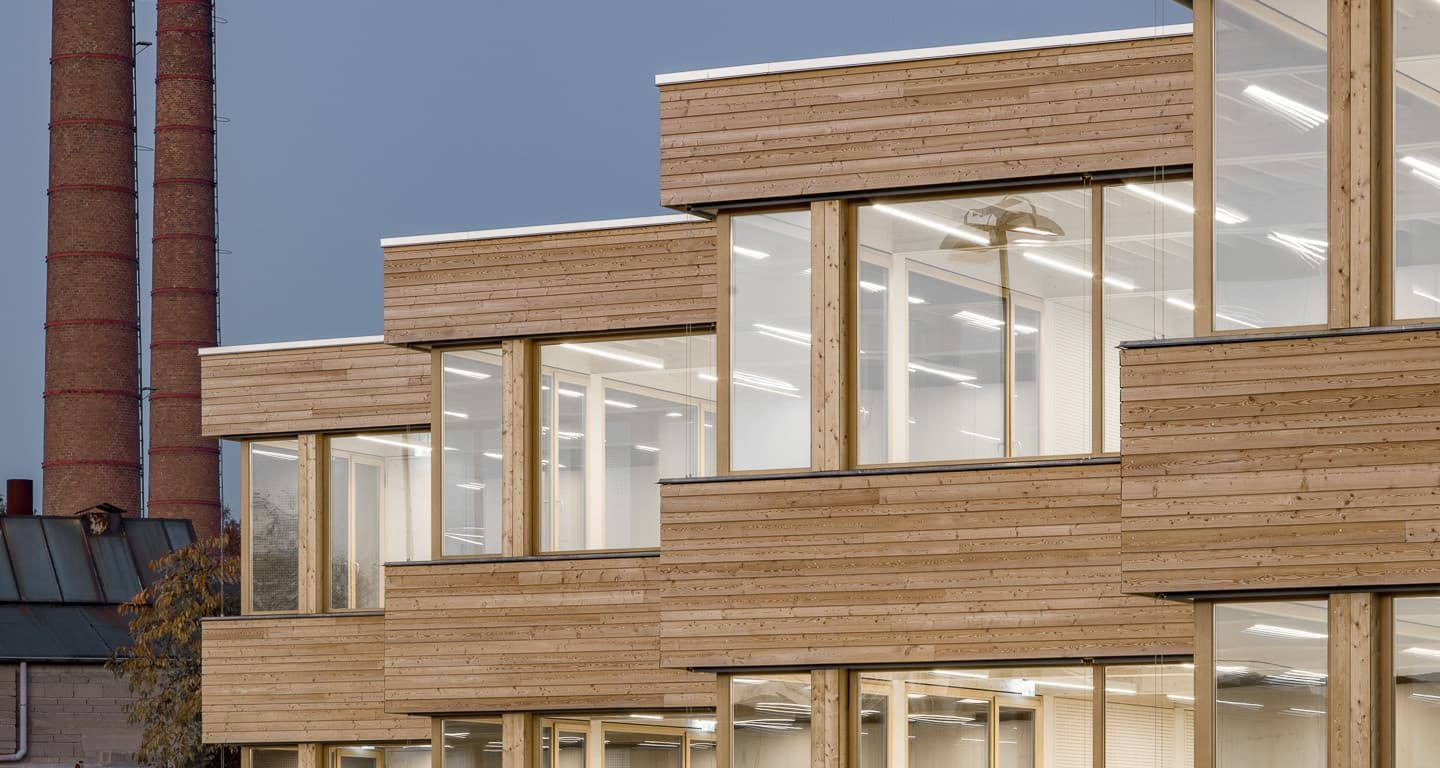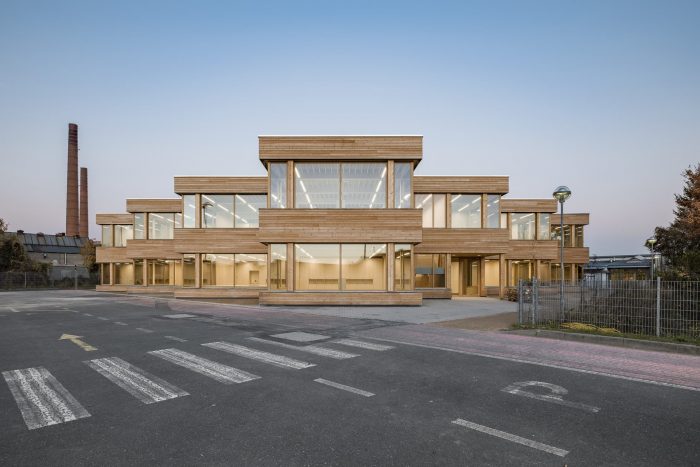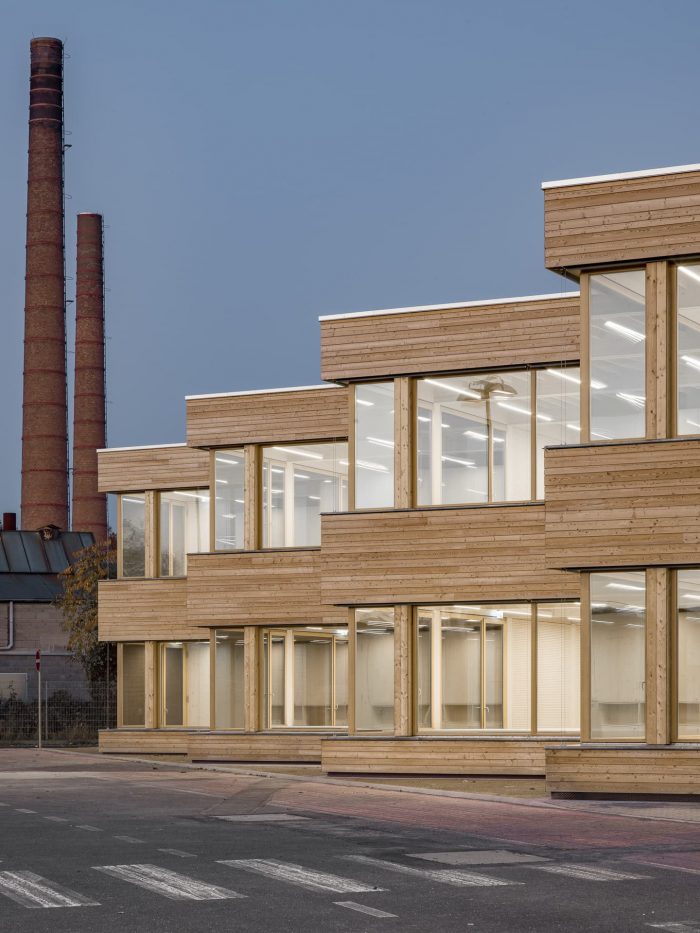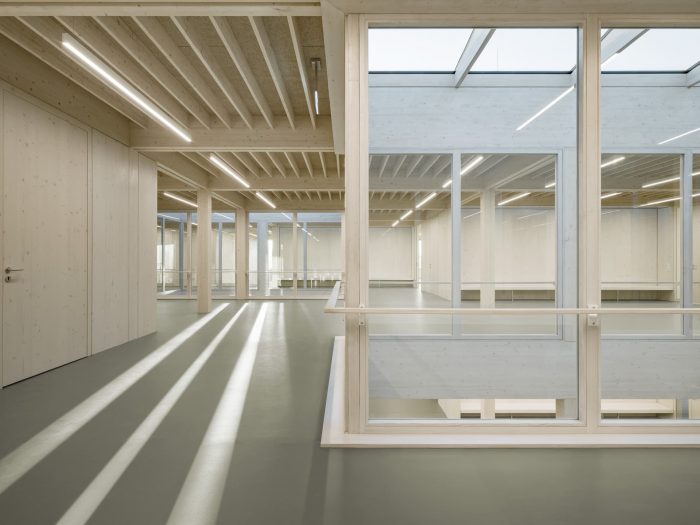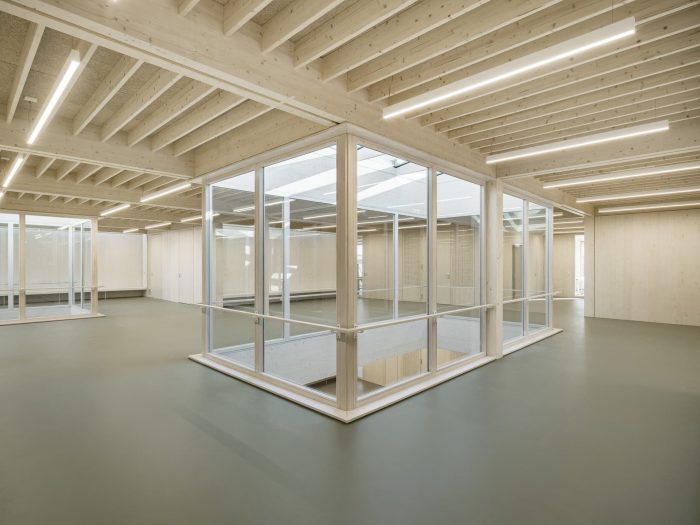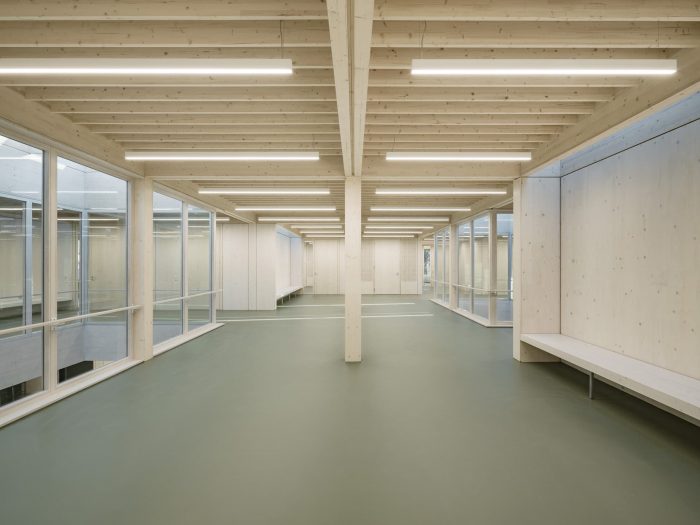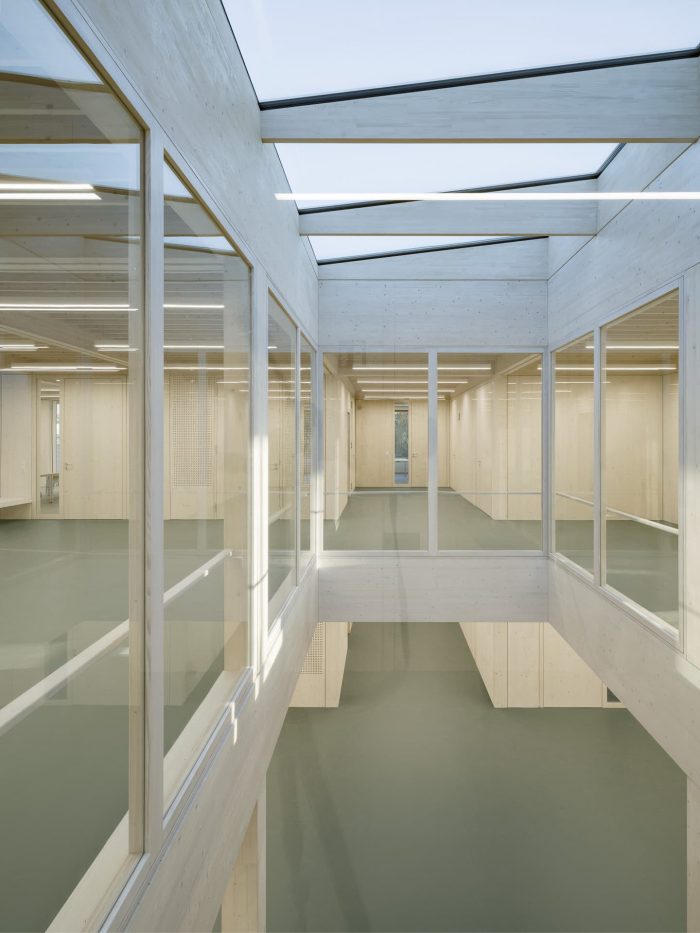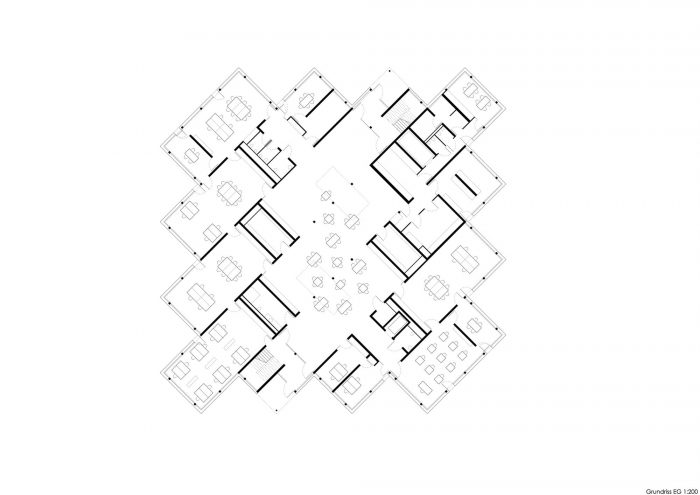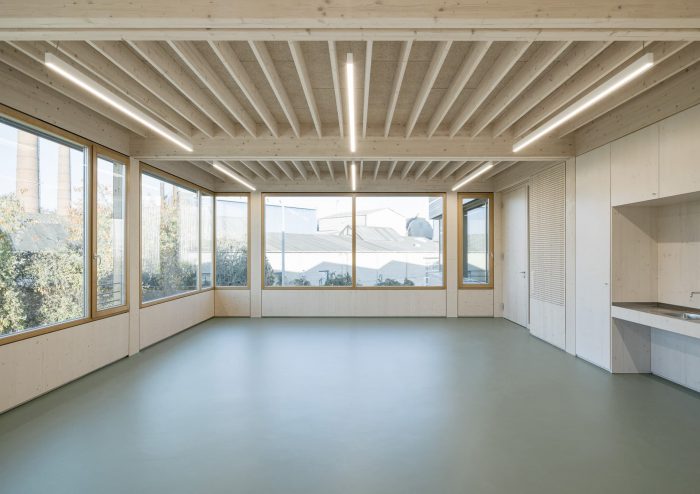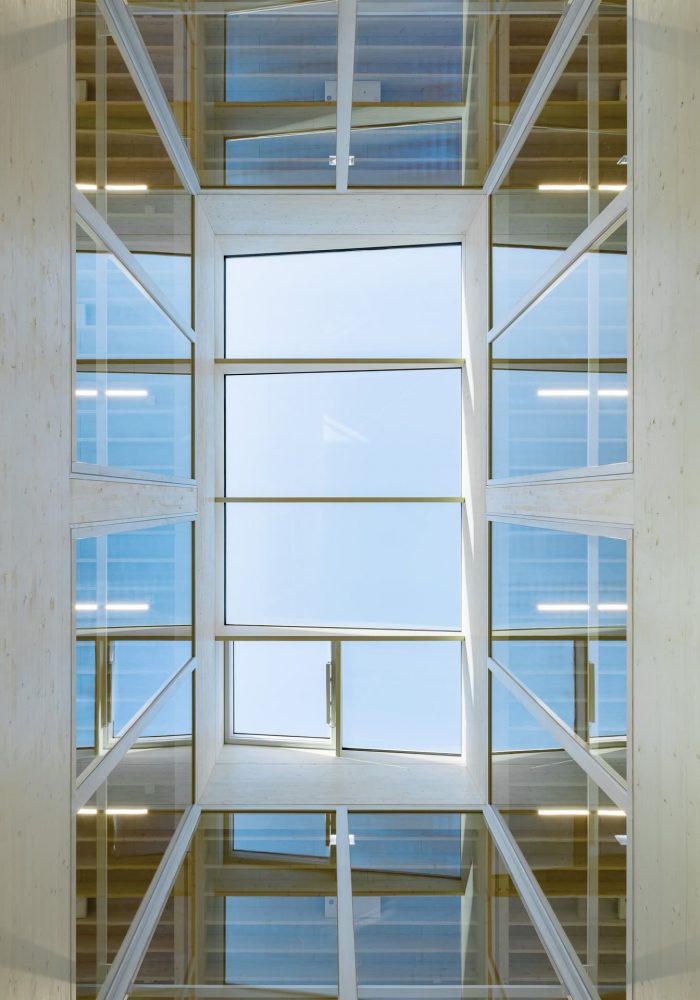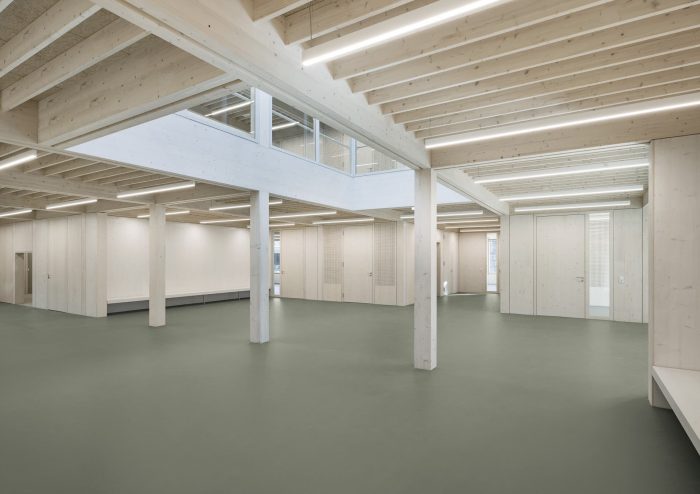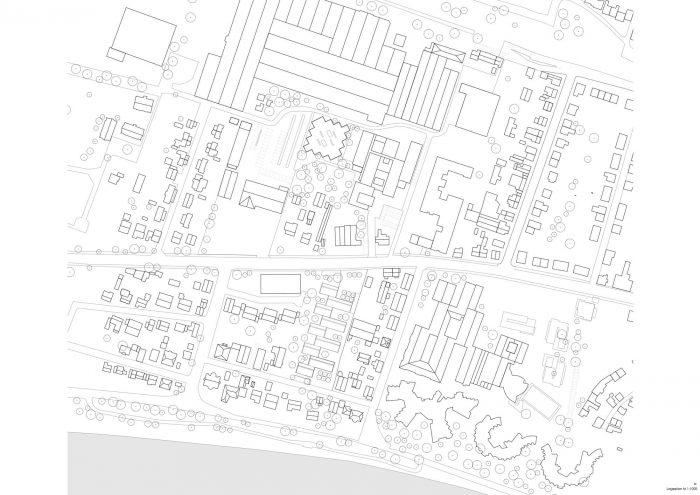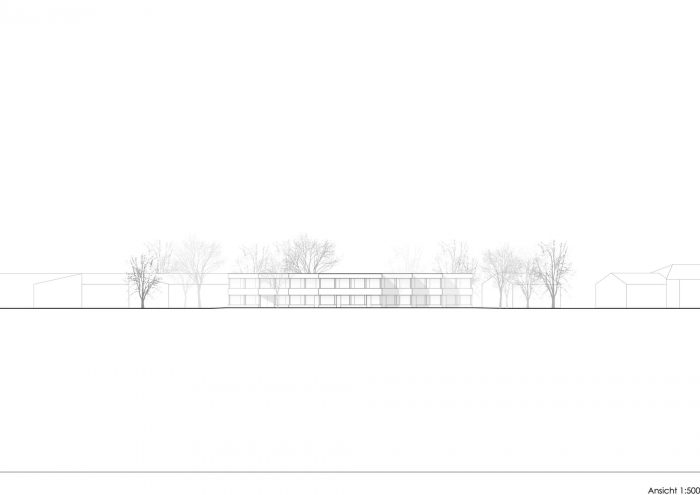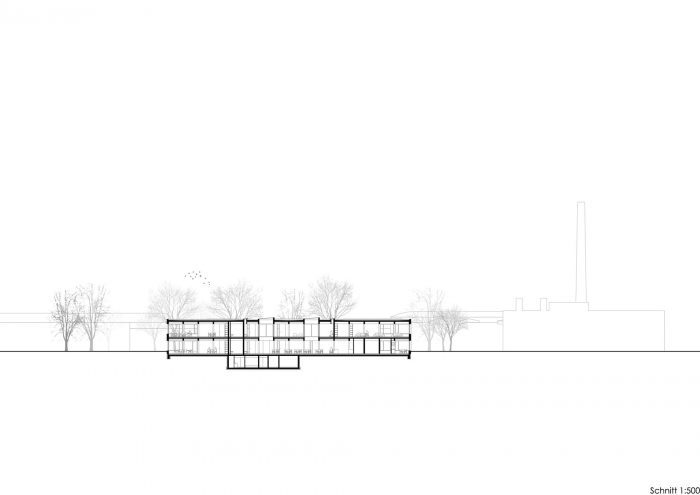评估和支持中心帮助许多人为他们的未来做准备。这就是为什么在这些人接受诊断、支持、实践经验和工作应用培训时,为他们制定一个鼓舞人心、激励人心的建筑环境至关重要。这一要求需要在外部外观和内部氛围的质量上得到满足。
The Assessment and Support Centre helps prepare many people for their future. This is why it is essential to formulate an inspiring, motivating architectural environment for these people while they undergo diagnosis, support, practical experience, and job application training. This requirement needs to be met in both the external appearance and the quality of the ambiance inside.
随着布局结构与相邻的建筑成一定角度,一个由一系列台阶或凹槽和投影组成的建筑焦点已经被创造出来,使其在超市和汽车维修店之间的相当无面的环境中具有高度的识别性和可识别性。这种结构主义的方法提供了所需的活力感,建筑本身没有正面或背面。在规模上,这个两层楼的结构完美地融入了城市景观中不同规模的邻近建筑的异质环境。
With the layout structure set at an angle to the adjacent buildings, an architectural focal point has been created consisting of a series of steps or recesses and projections, making it highly identifiable and recognizable amidst the rather faceless surroundings, between a supermarket and a car repair shop. This structuralist approach delivers the desired sense of vibrancy with no front or rear to the building as such. Small in scale, the two-story structure fits perfectly into the heterogeneous context with the different scales in the neighboring buildings in the urban landscape.
参观者的好奇心被外观所唤起,在通过前庭后会感到惊奇–这是一个形状各异的内部大厅,天花板上有两个开口,日光从上层流过。它作为一个食堂使用,意味着大厅可以有足够的规模。这也使它变得活泼和吸引人,从而降低了寻求咨询的人的抑制门槛。在食堂内,不同的座位区,包括高处和低处,构成了空间的一个组成部分,可以使用房间隔板进一步分隔成安静区。整个空间也可用于举办大型活动。
With their curiosity aroused by the exterior, visitors are wowed after passing through the vestibule – an interior hall varied in shape and with two openings in the ceiling, through which daylight streams from the upper floor. Its use as a cafeteria means the hall can be ample in size. This also makes it lively and appealing, thus lowering the inhibition threshold for people seeking counseling. Within the cafeteria, different seating areas, both high and low, form an integral part of the space, which can be further separated into quiet zones using room dividers. The whole space can also be used for sizeable events.
平面图分为两个区域,每个区域的工作间位于中心位置。与之相邻的是特殊房间,上层是电脑室和工艺室。
The floor plan is divided into two areas each with the workrooms located centrally. Adjacent to these is the special rooms with the PC room and the
手工艺室在上层,培训厨房在底层。诊断室和内部办公区位于侧面,那里更有保护。所有的培训室都可以相互连接,允许各组之间进行交流,在护理和支持方面发挥协同作用。这里没有一系列的门或黑暗的走廊。相反,明亮和随之而来的不同的交流区域打开了不同的空间,从而确保了清晰和简单的定位。
craft room on the upper floor and the training kitchen on the ground floor. The diagnosis room and the internal office areas are located at the side, where they are more protected. All training rooms can be interconnected, allowing exchange between groups and synergies in care and support. There is no series of doors or dark corridors. Instead, bright and consequently varied communication areas open up the different spaces, thus ensuring clear and simple orientation.
与该建筑的目的相适应,保留的建筑语言自成一体,并与周围环境对话。在内部,实现了一个保护性的但欢快的、友好的开放和交流的氛围,充满了光亮,是一个在轻松的环境下提供支持和学习的理想环境。拟采用的材料增强了空间构成中的现有质量,采用了明亮的油渍木地板和木色的窗户型材。彩色的窗帘使房间的气氛经常交替变化,以配合特定的用途,对室外空间和公共区域有不同程度的透明度。
Appropriate for the building’s purpose, the reserved architectural language stands on its own and in dialogue with its surroundings. Inside, a protective yet cheerful, friendly atmosphere of openness and communication suffused with light is achieved as an ideal environment for providing support and learning in a relaxed setting. The intended materiality enhances the existing quality in the spatial composition with bright oiled wooden flooring and wood-colored window profiles. Colored curtains allow frequently alternating room moods to match specific uses with varying degrees of transparency to the outdoor space and to the communal areas.
Architects: Waechter + Waechter Architekten
Area : 3153 m²
Year : 2018
Photographs :Thilo Ross Fotografie
Lead Architects : Prof. Felix Waechter und Sibylle Waechter
Design Team : Karina Gruber, Katharina Bell, Kristine Schnatwinkel, Lisa Matzdorff, Anita Majowski
City : Neuwied
Country : Germany

